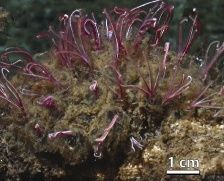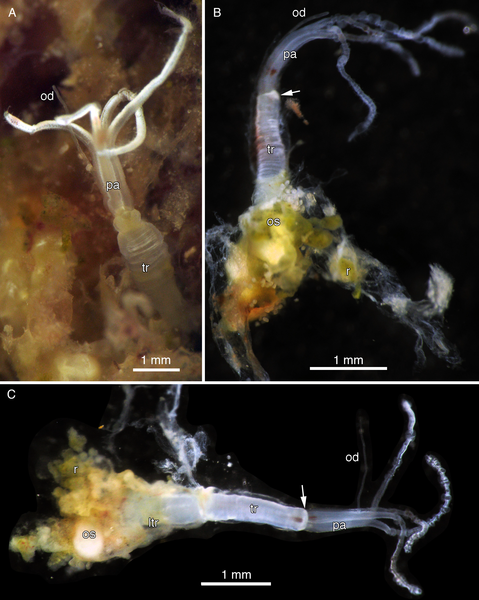The bone-eating worms were found in the depths of the ocean. More than 30 species of Osedax, often known as "bone devourers" or "zombie worms," feed on the skeletons of whales and are thought to have existed since the Cretaceous.

Bone-Devouring Worms
There are certain creatures that resemble small plants that live in the deep water. They lack a mouth, a stomach, and a sense of nausea. They reside in a tube with a cluster of roots at one end and a fluffy red plume poking out of the other.
They were discovered by coincidence on a whale skeleton in Monterey Bay, California, over 3,000 meters below. When deep-sea scientists first saw them, they grew like a shaggy carpet in 2002. These samples, recovered by a deep-diving robot, showed that they were indeed bone-eating worms, formally known as Osedax, or "the bone-devourers" in Latin.
Once researchers figured out where to look, the search for zombie worms began. Dead whales that had been beached were carried offshore and sunk. Pig, cow, and turkey bones are delivered to the seafloor by landing devices, which are retrieved months or years later.
According to Greg Rouse of the Scripps Institution of Oceanography in San Diego, who was part of the team that discovered and identified Osedax, "basically, anywhere we put bones, we get [the worms]."
Found All Over the World

More than 30 different species from around the globe have been discovered. The bone-eating snot flower, Osedax mucofloris, was initially found off the coast of Sweden. In 2020, Osedax fenrisi-named after the wolf-headed son of the Norse deity Loki-was found in the Arctic at a hydrothermal vent of more than 2,000 meters.
The size of the bone-eating worm ranges from that of a little finger to that of an eyelash. Those that can be seen with the naked eye are often female. Males tend to be little and do not consume bones. Inside a female's mucous tube, they reside in "harems" of tens or hundreds and wait for her eggs to hatch so they may promptly fertilize them.
These little boys obtain all their energy from their moms through the yolks of their eggs. Once that energy reserve is depleted, they pass away. Robert Vrijenhoek, a retired evolutionary scientist from the Monterey Bay Aquarium Research Institute in California and a member of the initial Osedax-finding team, adds, "We termed them, kamikaze males."
Ancient Creatures
Paleontologists have discovered a worm that first appeared 100 million years ago. Osedax creates acid by drilling holes in bones, like how people make stomach acid. The worms feed on the fossilized bones of a 100-million-year-old plesiosaur.
Osedax is thought to have existed at least since the Cretaceous period, long before there were whale carcasses to eat, according to genetic analyses.
Despite discovering several new species, no Osedax larvae have been found. How the worms locate, bones is unknown. It is thought that they could float until they come upon a skeleton, perhaps led by chemicals in the water.
These worms may build stepping stones out of whale skeletons, and other big vertebrate remains stripped naked by scavengers, according to studies of Osedax DNA. According to Vrijenhoek, "Osedax probably just hop, skip, and leap across the ocean."
Related Article : Casper the Friendly Ghostly Octopus Found in the Depths
For more news from the animal kingdom, don't forget to follow Nature World News!
© 2025 NatureWorldNews.com All rights reserved. Do not reproduce without permission.



